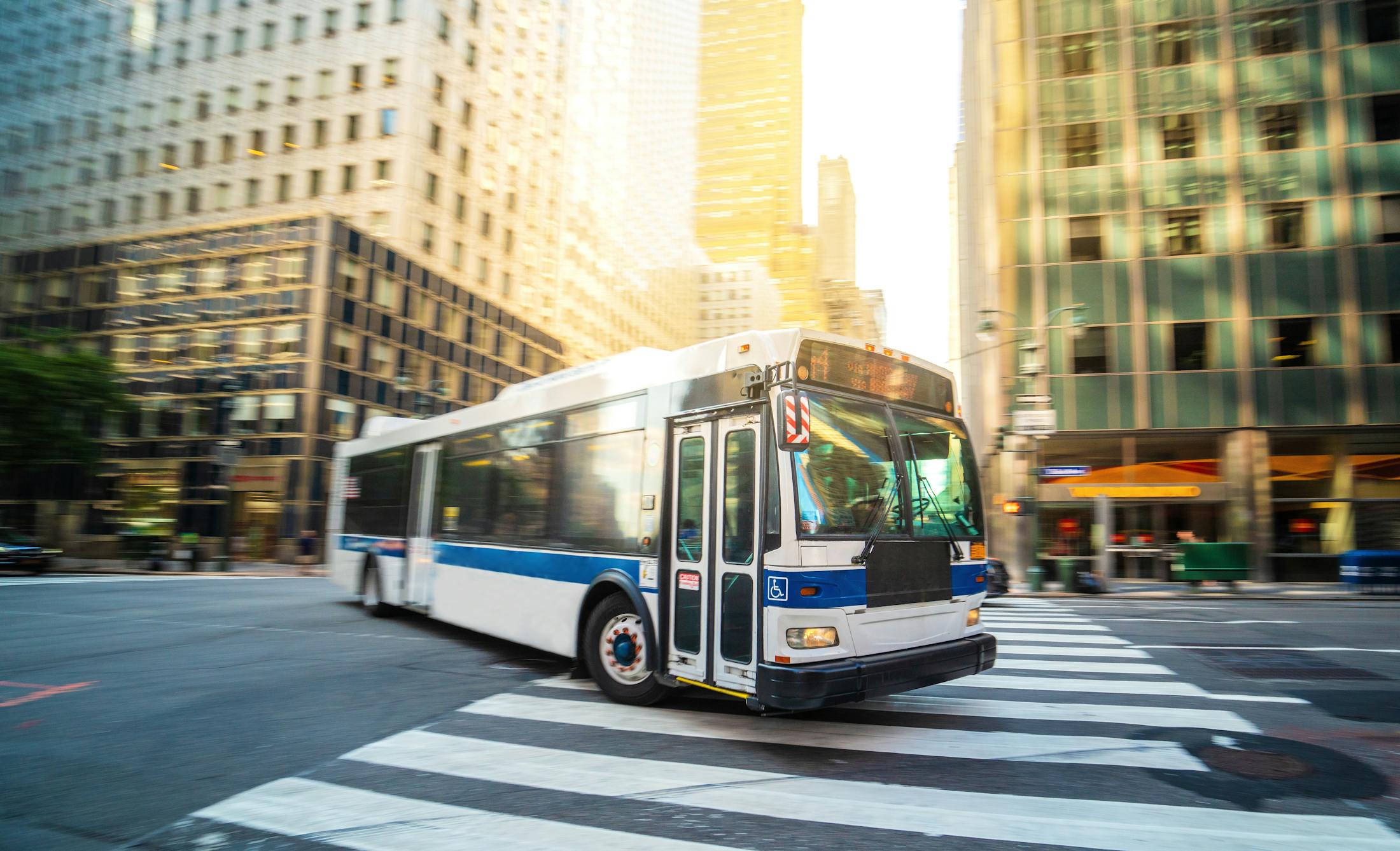Every day, millions of people in New York, both locals and visitors, prefer to use public transportation rather than their own cars. The city boasts a large public transportation network, which consists of buses, subways, and trains, primarily overseen by the Metropolitan Transportation Authority (MTA). This system is so efficient that about 54% of New York City households don't even own a car. Based on this, there’s a downside to depending on public transportation so much – if the operators or maintenance staff of these vehicles do not do their job right, it can result in catastrophes for passengers.
Common Types of Injuries from MTA Bus Accidents
When it comes to accidents involving MTA buses, whether as a pedestrian or a passenger, you can get injured in a variety of ways:
- Neck injuries: For passengers, sudden stops or collisions can cause the head to jerk rapidly, leading to whiplash, neck pain and stiffness, headaches, and sometimes more severe injuries.
- Broken bones: Pedestrians hit by an MTA bus or passengers thrown inside the bus during an accident can suffer from fractures. The most vulnerable areas are limbs, ribs, and, in some cases, the skull.
- Lacerations: Sharp edges, broken glass, or the force of impact can easily cause cuts and bruises. These injuries might seem minor but can be life-threatening depending on the depth of the cut.
- Head injuries: Traumatic brain injuries, including concussions, can occur, especially if there was a forceful blow to the head. These can range from mild concussions to permanent brain damage.
- Spinal cord injuries: High-impact collisions can injure the spine so much that the victim may become paralyzed for life.
- Internal injuries: Internal bleeding or damage to organs can occur due to the blunt force of the collision.
- Psychological trauma: Apart from physical injuries, being hit by a bus (or being inside a bus when it crashes) can result in PTSD, anxiety, depression, and other emotional issues.
- Sprains and strains: Sudden movements during a crash can cause sprains (ligament injuries) and strains (muscle or tendon injuries), particularly in the back and limbs.
- Crush injuries: If a pedestrian is trapped under a bus or between the bus and another object, they can suffer crush injuries; these are usually deadly.
Who Can I Sue for an MTA Bus Accident in New York?
It depends on the exact issue that led to the crash. If the bus driver’s negligence caused it because, for example, they were driving under the influence, failed to obey traffic laws, or talking on the phone, they could be held liable for the damages. But the MTA bus driver isn’t the only defendant you can file a lawsuit against:
The Metropolitan Transportation Authority (MTA)
As the employer of the driver, the MTA can be held responsible under the legal principle of "vicarious liability." This principle holds an owner/manager accountable for the actions of their employees performed during their employment.
Bus maintenance companies
If the accident was due to a mechanical failure or poor maintenance of the bus, the company responsible for maintaining the bus might be liable. This could include inadequate maintenance, failure to repair known issues, or negligent inspections.
Parts manufacturers
If a defective part contributed to the accident, you may be able to sue the manufacturer of that component under product liability law; all manufacturers must ensure their products are safe for use.
Other drivers
If the bus crashed because another driver on the road was being reckless, speeding, or not following traffic signals, they could be liable.
New York City or local government
Sometimes, the city or municipal body fails to take proper care of the road. Maybe they did not fix the potholes, or did not put up clear signage, or didn’t repair the malfunctioning traffic lights. If this contributed to the accident, whichever party is responsible for the road maintenance can be named in the lawsuit.
Third-party companies
The MTA often hires other contractors for services such as maintenance, construction, transportation, and more to support their operations. If the accident involved such a third-party logistics company, delivery vehicles, or services, they could share responsibility for the crash.
Steps To Take If You Were Injured on an MTA Bus Accident
The first thing to do when you have been in a traffic accident is to go see a doctor right away. Even if you cannot see any injuries and you feel okay, remember, concussions and internal bleeding are not immediately visible. Whether you were hit by the bus or were inside it during the crash, call 911 if your injuries seem serious. If they don’t, just visit the nearest hospital or urgent care facility.
And if you are able to do it, take clear pictures of the accident scene, including the bus, any other vehicles involved, your injuries, and any relevant street signs or signals. Don’t forget to note the bus number, route, and the exact location of the crash. Ask the bus driver's name and identification number and collect contact details of any witnesses. If the bus hit another car or bike, get their drivers' information too, including license plate numbers and insurance details.
Then file a police report. If you are thinking of taking legal action or you know you will need to contact your health insurance, this official police account will come in handy for those proceedings. Make sure you ask the responding officers how to obtain a copy of the report for your own records.
It’s also a salient idea to consult a personal injury attorney, especially one experienced in MTA bus accidents so they can guide you on your legal rights and the process for seeking compensation. You will need to notify your personal health insurance provider, and maybe your auto insurer too if you were driving a vehicle that collided with the bus – it might be best to communicate with them through your lawyer, otherwise you may end up accidentally saying something that shifts the blame on you.

What Type of Damages Can I Recover?
You may be able to claim the following damages for your injuries:
- All medical-related costs, including hospital bills, doctor visits, medication, physical therapy, and any future medical care related to the injury.
- Compensation for the income you lost due to your inability to work while recovering. If the injury affects your ability to work in the future, that will count too.
- Compensation for physical pain, emotional suffering, ongoing discomfort, anxiety, stress, and other psychological impacts.
- Loss of enjoyment of life if the injuries prevent you from engaging in activities you once enjoyed or affect your quality of life.
- Compensation for any lasting physical disability or disfigurement caused by the accident.
- The cost of repair or replacement of your personal property (like a car, if you were driving, or personal belongings) if damaged.
- Wrongful death, funeral expenses, loss of financial support, and loss of companionship.
Statute of Limitations for Filing an MTA Bus Accident Claim
If you want to obtain monetary compensation for your losses, you must serve a Notice of Claim to the New York City Transit Authority (NYCTA) or the MTA within 90 days from the date of the accident. After filing this notice, you generally have one year and 90 days (i.e., 455 days) to file a personal injury lawsuit against the MTA.
For wrongful death claims, the deadline is two years from the date of the victim’s death. This is separate from the 90-day deadline for the Notice of Claim, which is counted from the date of the crash that led to the death.
These deadlines may be extended in certain cases, such as for minors or people deemed mentally incompetent at the time of the collision. The court sometimes allows late filings of the Notice of Claim in exceptional cases, but this is rare and requires a very strong justification. If a federal law was violated somewhere, different statutes of limitations could apply.


